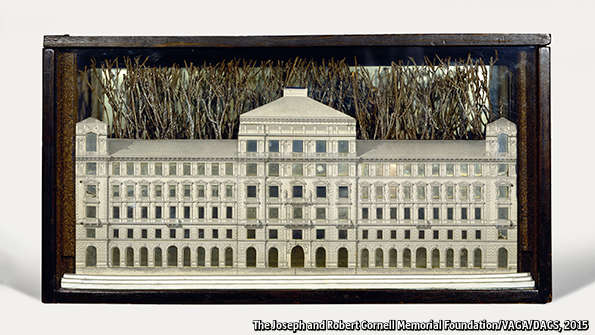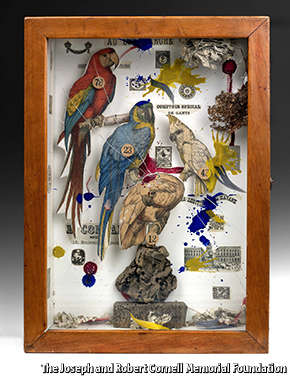
From my archive
MANY artists are unconventional, but Joseph Cornell (1903-1973) was more so than most. His chosen medium, for example, was not paint or stone but stuff: twine, marbles, plastic toys, playing cards, maps (celestial and terrestrial), photographs, etchings, clay pipes, advertisements, stamps, sea shells, music, small glass bottles, coiled springs, newspaper clippings, film and children’s games. He organised these into folders labelled “Durer” or “Dried Pigments” or “Watch Parts”. Unlike contemporaries such as Pablo Picasso and Georges Braque who sometimes employed such things in their work, Cornell used nothing else. Boxes were his thing.
Until their deaths in the 1960s, Cornell lived his entire adult life with his mother and younger, wheelchair-bound brother. His studio was in the basement of the family home in Queens, New York, a city he seldom left. From his vast stash of stuff he created fantastical, boxed collages of two- and three-dimensional objects, as well as assemblages housed in small vitrines. These pieces, in which childhood fancies were given a Surrealist edge, made him famous in America. Yet more than 40 years after his death he remains little known elsewhere. His singularity was his strength, but it also held him back. However much artists balk at being lumped together into movements, schools and “isms”, such packages help promote them internationally.
“Wanderlust”, at the Royal Academy in London, is Cornell's first British solo show. It has 80 pieces, arranged into themes like “Play and Experiment” and “Collecting and Classification”. These are arbitrary—just about anything Cornell made can be called playful or experimental—but at least they are not intrusive, and his work captivates from beginning to end. “Tilly Losch”, (c.1935) is a box covered in marbled paper, inside which the cut-out figure of a girl in old-fashioned dress drifts far above a snowy mountain range. She is suspended by strings as if hanging from a hot air balloon. In “Object (Soap Bubble Set)” (1941), a clay pipe—its bowl in the grip of a bird’s talons—emits a string of bubbles each of which contains a sea shell.
“Pharmacy”, made two years later, is a wooden case holding a grid of glass shelves on which rest 20 vials of such remedies as wood shavings and butterfly wings. (The artist, a Christian Scientist, believed that faith not drugs cured physical ills.) Clearly Cornell borrowed from René Magritte and Marcel Duchamp as others, including Damien Hirst, would later borrow from him. In time though, Cornell found his own vision and stuck with it. He added film and theatre to his repertoire, but whatever the form he worked in collage and assemblage exclusively.

The scale is always small, which gives these pieces a feeling of intimacy. It is as if the viewer is entering a place where the everyday and the fabulous are locked in an embrace. It is a union that is always passionate, if occasionally disturbing: intimate does not necessarily mean cosy, any more than the things of childhood are necessarily all sweet.
Cornell was a magnet for myths. This is not surprising: his art was far better known than he was and it was unlike anyone else’s. Though rumoured to be a recluse, or even a madman, he was sociable in his own way. His friends and champions included Duchamp, Peggy Guggenheim and Mark Rothko. And while he did not personally crave the spotlight, he was ambitious for his art, and successful from relatively early on. He never lacked for influential dealers, first those specialising in Surrealism, later in Abstract Expressionism. There is no denying that Cornell was an obsessive. But to judge by the evidence on view at the Royal Academy, he was also a splendidly functional artist.

No comments:
Post a Comment